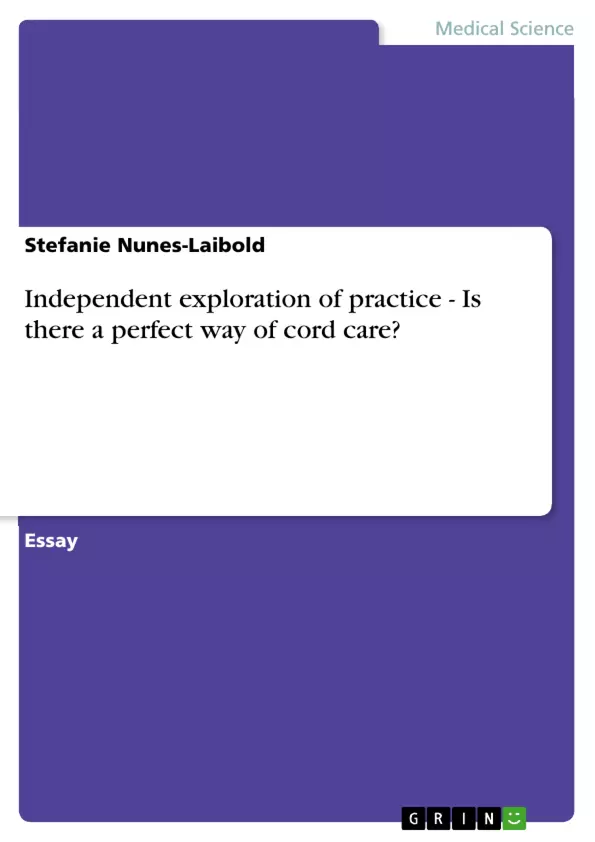No matter how far one looks back in the history of mankind: As long as humans are born by women there were midwives and there will be midwives.
The knowledge of “wise women” led already in the Middle Ages to uncertainty - particularly among the physicians and church princes. Midwives were strongly affected by witch-hunt. Many were burnt at the stake, because people did not trust their knowledge and their art – because of ignorance or eagerness for power. At that time midwives were considered to work in the function of a gynaecologist or as a person with healing skills which got their knowledge as a gift. They acquired their knowledge through the knowledge of older women and own practical experience. The current and historical literature about the midwife art gives an idea of this traditional occupation of woman (Skolik 2001). This knowledge developed more and more and passed on since generations. But nowadays the situation has changed: Many midwives are working on their own with their own experiences and their own unverified methods of practice. This already begins in the time of the midwifery training without standards in many working areas. The care of the umbilical cord of the baby is in the homely care of the midwife again and again in discussion. The unverified methods of practice in midwifery tasks are widespread in different working fields and should initiate a development of caring with evidence-based background. Dannenfeld stated in their work about the significance of the salutogenetic concept of the midwifery work that in this work it is important to deal with scientific topics for achieving a more effective and more professional work. This statement is emphasised by the Schweizer Hebammenverband. They mentioned that the midwifery work is including the task of assuring and further development of their quality of work.
In 2002 the World Health Organisation (WHO) mentioned in their training modules about Essential Antenatal, Perinatal and Postpartum Care that throughout the world there are numerous methods of caring for the cord, but the most effective is to use NO application to the cord but to keep it clean and allow it to dry over the first two days. In context to this statement this essay works out the different actually used methods of umbilical cord care and their advantages and disadvantages in comparison to the recommendations of the WHO.
Inhaltsverzeichnis (Table of Contents)
- Introduction
- The History of Umbilical Cord Care
- Present Practice of Cord Care
- German methods for cleaning or treating the umbilical cord
- Traditional cord care practices worldwide
- Medical practices of cord care worldwide
- Evaluation of studies about cord care
- Conclusion and recommendations for future practice
- References
- Bibliography
Zielsetzung und Themenschwerpunkte (Objectives and Key Themes)
This essay aims to explore different methods of umbilical cord care and their advantages and disadvantages, comparing them to the World Health Organisation's (WHO) recommendations. The objective is to contribute to the development of evidence-based practices in midwifery.
- The historical development of umbilical cord care practices
- Current practices and methods of umbilical cord care worldwide
- The importance of evidence-based practice in midwifery
- The role of the midwife in providing safe and effective cord care
- The impact of different cord care practices on the health of the newborn
Zusammenfassung der Kapitel (Chapter Summaries)
- Introduction: This chapter introduces the importance of evidence-based practice in midwifery, highlighting the need for standardized methods of umbilical cord care. It emphasizes the historical and present-day challenges and variations in cord care practices.
- The History of Umbilical Cord Care: This chapter provides a historical overview of umbilical cord care practices, tracing the evolution of methods from the 1950s to the 1980s. It highlights key developments and the growing understanding of the importance of antimicrobial treatments and infection control.
- Present Practice of Cord Care: This chapter focuses on the current practices of umbilical cord care. It discusses the importance of proper hygiene and the use of topical antimicrobials. The author shares their personal experiences and the challenges of finding evidence-based methods for cord care.
Schlüsselwörter (Keywords)
Key topics explored in this essay include umbilical cord care, evidence-based practice, midwifery, infection control, antimicrobial treatments, historical development of practices, and World Health Organisation recommendations.
- Citation du texte
- BSc of Midwifery Stefanie Nunes-Laibold (Auteur), 2006, Independent exploration of practice - Is there a perfect way of cord care?, Munich, GRIN Verlag, https://www.grin.com/document/85909



